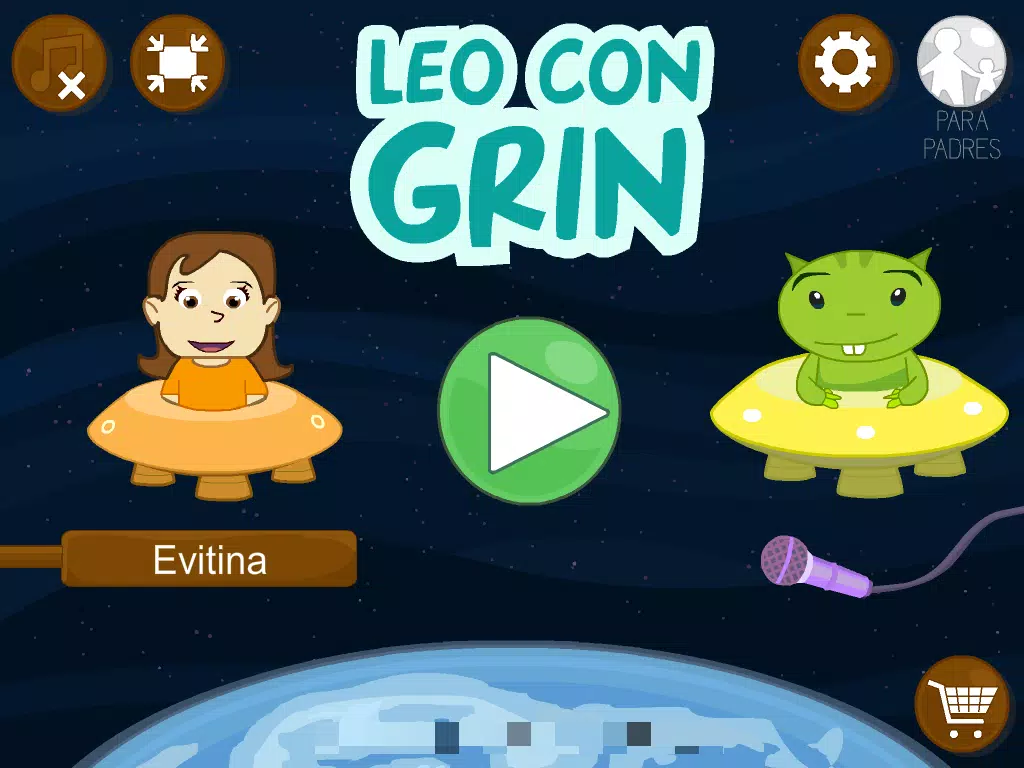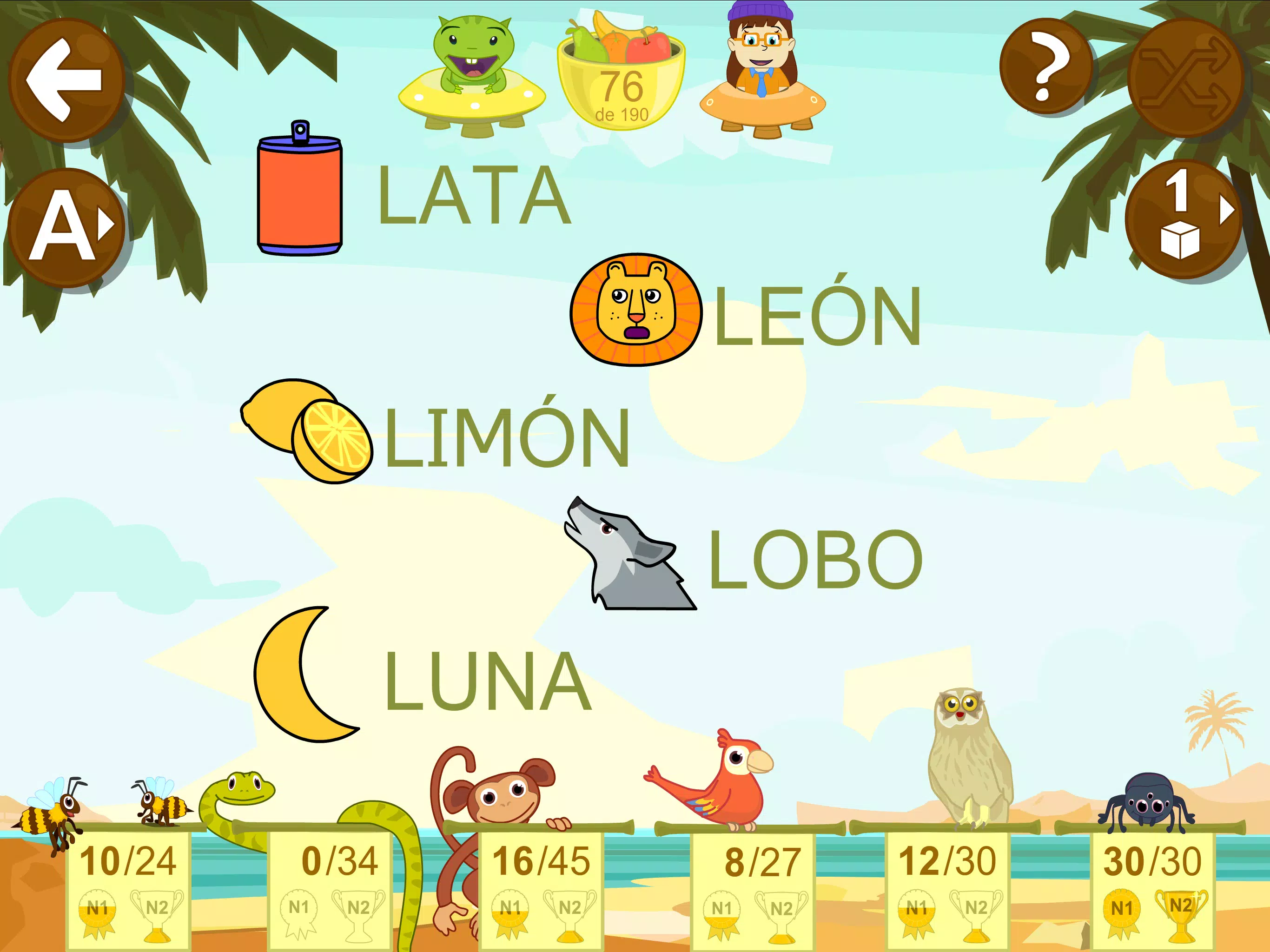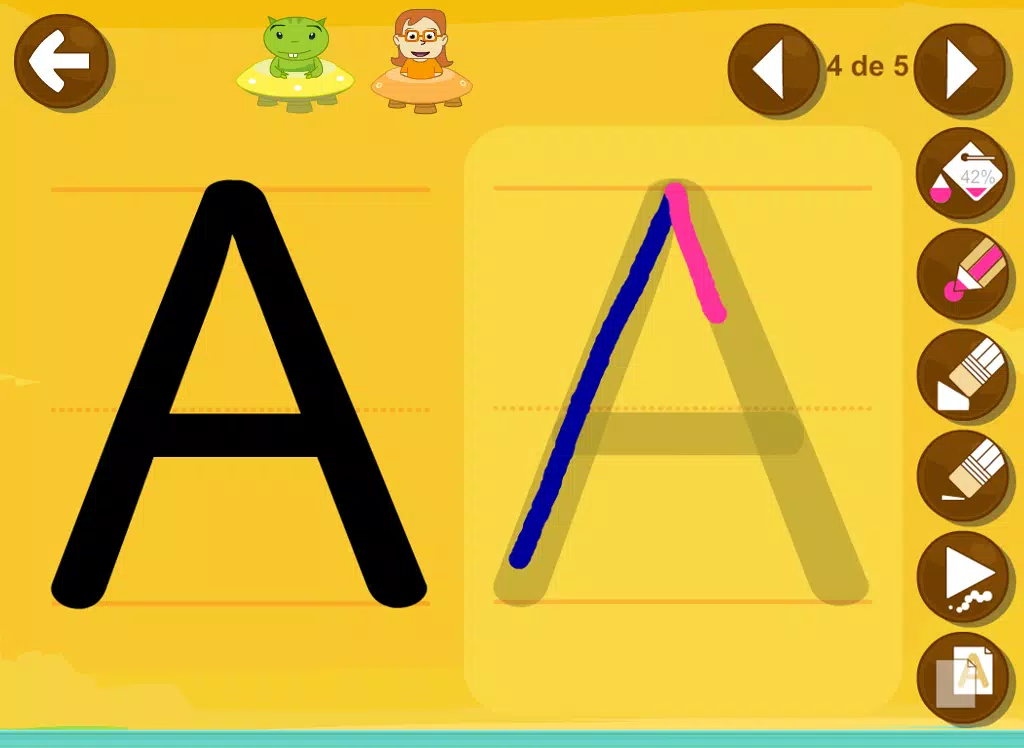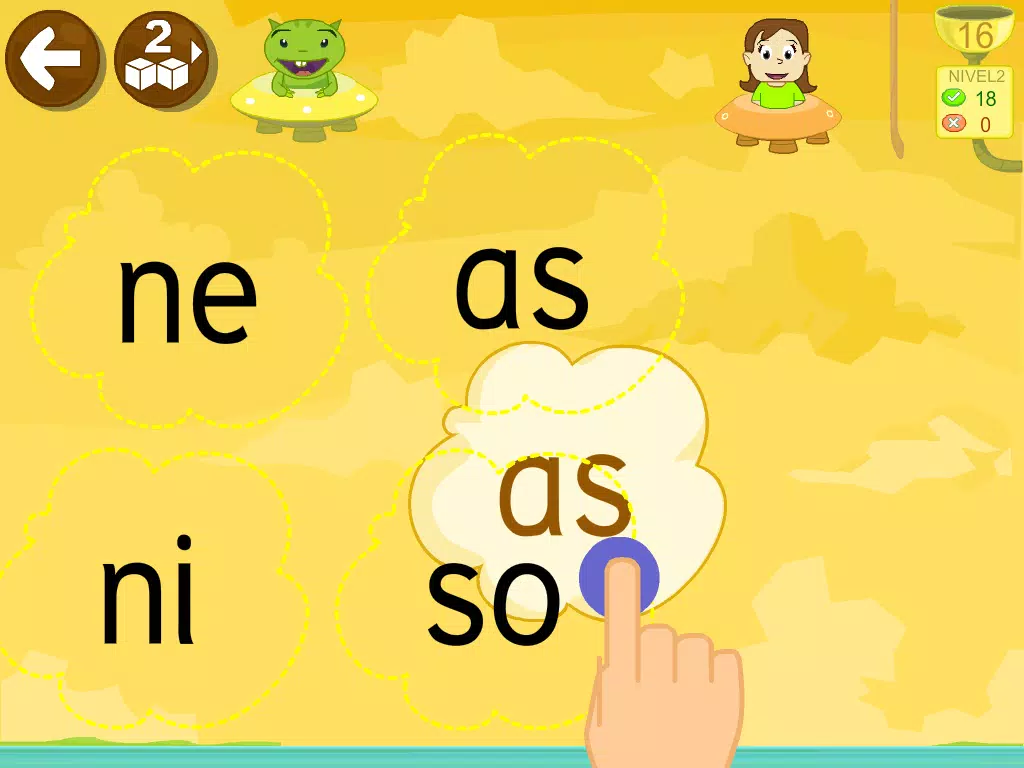Home > Games > Educational > Learn to read Spanish

| App Name | Learn to read Spanish |
| Developer | Educaplanet S.L. |
| Category | Educational |
| Size | 65.1 MB |
| Latest Version | 6.4.136 |
| Available on |
Learning to read Spanish and mastering the alphabet are fundamental skills that lay the groundwork for a child's educational journey and beyond. These skills are crucial from preschool through the early years of elementary school and remain essential throughout adulthood. Children today, often referred to as digital natives, are naturally drawn to computers and tablets. This affinity presents a golden opportunity to reinforce or enhance what they are learning in school.
METHOD
Our method, "Learn to Read Spanish with Phonics," is tailored for children aged 3 to 6 or 7, and it's also beneficial for adults looking to improve their pronunciation. The program is structured into a section for tracing letters and comprises 30 lessons. It starts with vowels and progresses through consonants and digraphs in the following order: L, M, S, T, P, N, D, F, H, C, Q, CH, G, GUE, R, -rr-, -R, B, V, G, J, GE, GUE, Y, Z, CE, LL, X, K.
Each lesson features 11 engaging games, available at two different difficulty levels. This approach is perfect for parents and educators seeking interactive ways to help children practice their initial syllables and words in Spanish. Encourage the child to listen and engage with the exercises; full comprehension is not required at this stage.
Learning to read is a gradual process that may extend over a year or more. We suggest practicing for a few minutes daily and periodically revisiting previously learned material, always adjusting the type and level of exercises to suit the child's pace. It's crucial that this learning feels like a game.
LEVELS
All games are designed with two adjustable difficulty levels. Children can progress at their own pace, with the flexibility to pause and resume play at any time. Successfully completing games rewards children with fruits, adding a fun element to their learning journey.
The first level is suitable for children as young as three, and sometimes even younger with assistance from parents or educators. At this stage, children can solve games with the aid of instructions. The second level is more challenging, encouraging children to solve problems independently while keeping the learning experience enjoyable.
As parents or guardians, it's important to tailor the difficulty to the child's ability. Avoid pressuring them to complete a level or advance too quickly.
ABILITIES
Our method enhances several key abilities:
- ★ Visual and auditory memorization
- ★ Identification and Association
- ★ Discrimination
- ★ Understanding
- ★ Literacy
OPTIONS
From the home screen, users can:
- - Enable or disable background music
- - Toggle full-screen mode
Within the Tikis menus, additional options include:
- - Changing the font to uppercase, lowercase, or cursive handwriting
- - Enabling or disabling automatic activity, which switches games after a set number of exercises
- - Shuffling syllables to mix up the learning experience
ACHIEVEMENTS
The program allows for up to three profiles (avatars) for different children, tracking each child's progress, correct and incorrect answers, and representing their achievements as a percentage in the form of fruits. Fruits serve as a motivational tool, encouraging continued engagement. When children collect fruits in their basket, they can share them with little aliens in the game.
For a detailed overview of progress, users can access the reports button on the Tikis screen.
GAMES
NEW THE ALPHABET:
Children can listen and learn to write each letter of the alphabet, syllables, and some words through different modes: trace, copy, and free mode. They can choose between three types of letters: uppercase, lowercase, and handwriting.
For each lesson, there are 11 games designed to make learning fun and effective:
- DOLPHIN: Introduction to the word and its components.
- BALLOONS: Identifying letters within a syllable.
- CLOUDS: Recognizing the shape of each syllable.
- CRABS: Constructing syllables from individual letters.
- BUTTERFLIES: Identifying syllables.
- BEES: Recognizing the initial syllable of words.
- SNAKE: Forming words using syllables.
- MONKEYS: Building words from letters.
- PARROTS: Recognizing and reading words.
- MOUSE: Understanding the order of words and reading sentences.
- SNAILS: Creating sentences from words.
For any feedback or technical inquiries, please reach out to us at [email protected].
-
 Stalker 2: List Of All The Artifacts & How To Get Them
Stalker 2: List Of All The Artifacts & How To Get Them
-
 Trainer's Pokémon Set to Resurface in Pokémon TCG in 2025
Trainer's Pokémon Set to Resurface in Pokémon TCG in 2025
-
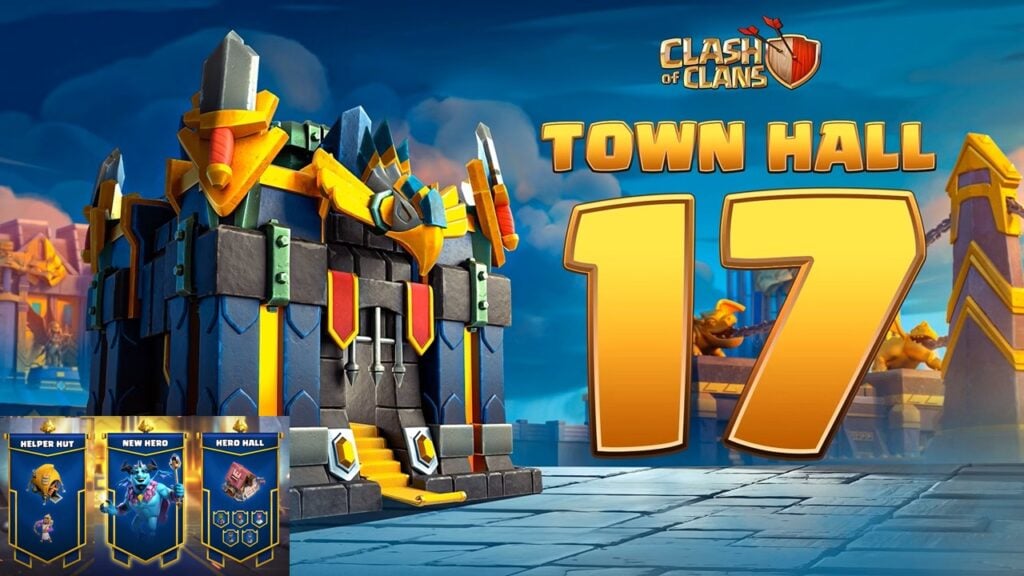 Clash of Clans Unveils Town Hall 17: Game-Changing Update Released
Clash of Clans Unveils Town Hall 17: Game-Changing Update Released
-
 Breaking: Ubisoft Unveils Covert NFT Gaming Venture
Breaking: Ubisoft Unveils Covert NFT Gaming Venture
-
 Fix Join Error in Black Ops 6: Different Version
Fix Join Error in Black Ops 6: Different Version
-
 Shadow of the Depth: Open Beta Now Available on Android
Shadow of the Depth: Open Beta Now Available on Android
